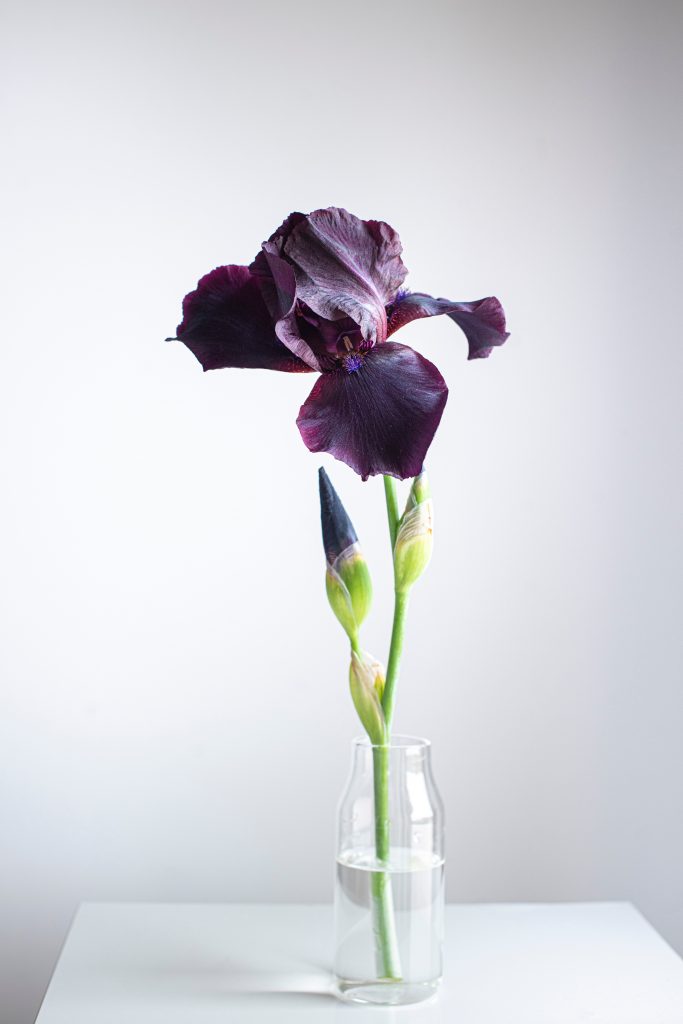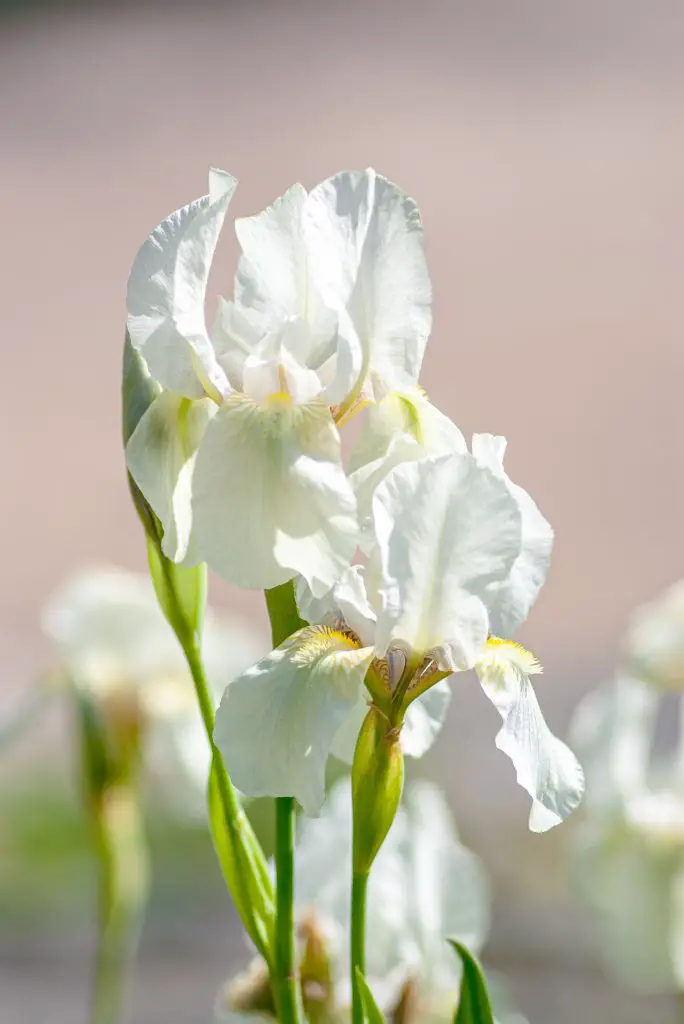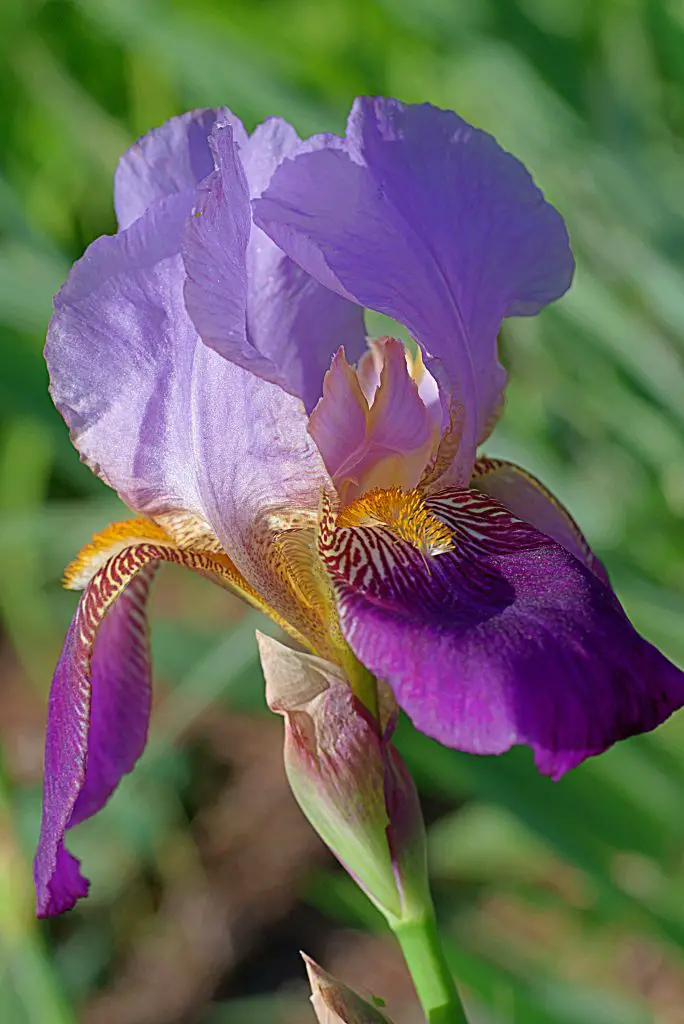Do Irises Spread? Are They Invasive? Irises are a popular bulb that produces relatively tall flowers that grow between 2 and 3 ft high and produce a beautiful display in mid to late spring depending upon the particular variety. However, one of the most common questions is do irises spread and multiply over time?
Iris bulbs do multiple over time and they will produce increasing numbers of bulbs as the plants get older. However, they do not generally spread from one place to another readily unless you intervene and actually move them. This growing habit can cause problems as overcrowding can occur within a couple of years if you do not dig up the plants and thin out the bulbs.
Overcrowding of the bulbs will become apparent with the volume of foliage that is created in a small space where the Irises are planted. At my place, I had a line of irises planted in front of fruit trees and within a couple of years, foliage from the irises was appearing within half an inch of each other along the ground which meant that the plants desperately needed to be divided.

How To Divide Irises
The division of irises is relatively easy and does not take a great deal of effort. The main issue associated with dividing the bulbs is the potential to damage them as they are removed from the ground. However, if you’re anything like me you’ll find that you have so many irises that damaging in one or two is really not a big deal.
But to avoid this situation it is best to use a spade and dig approximately 5 to 10 inches around with foliage clump has appeared. This is best done after the plant has flowered and the foliage is beginning to die back because you can easily see where the plants are and also ensure that the quality of the bulbs for next year is still good.
For those unfamiliar with bulbs, most types of flowers require you to leave the foliage on after it is flowered and allow it to die back completely before removing it. The reason for this is that the presence of the foliage allows the plant to continue to photosynthesize throughout the season.
Continued photosynthesis will ensure that a large volume of sugars is produced through the growing season that can then be funneled down into the bulb where it is stored for the following year. If this process does not occur it is likely that the plant may not flower the following year.
Once you have the bulbs out of the ground you will find that there will be clumps of bulbs joined together. These bulbs can be easily separated by hand by simply snapping them apart with your fingers to create separate bulbs. Once they have been separated they can be returned to the soil and replanted.

How To Replant Iris Bulbs
Once the bulbs have been removed from the soil this is an opportunity for the quality of the soil to be improved before the bulbs are replanted. To do this we recommend that compost be added to the soil before replanting.
When planting the bulbs they need to be placed in the ground at a depth of approximately 2 to 3 inches and to allow for further multiplication of the bulbs it is recommended that you plant them approximately 2 to 3 inches apart. Once the plants are in the ground it is advisable to apply a thick layer of mulch before watering the plants in well.
If you have excess bulbs that you are not ready to plant straight away for whatever reason they can be stored for a period of time in a relatively cool location. They are best stored, after excess dirt and soil has been removed from the plants, in a newspaper in a cardboard box which will allow a little bit of ventilation for the bulbs.
When To Replant Irises
For irises to flower successfully they need the opportunity to be able to put down roots in the soil before starting to produce the foliage in the early part of spring. This means that they need to be planted in the ground in early to mid-winter at the latest.
However, the precise timing will depend a little bit upon the climate within the region where you live. If you live in very cold climates where the ground freezes solid it is quite impractical to plant bulbs in midwinter.
But if you miss the planting window you can also consider placing the irises into pots as this will allow you to plant them a little bit later in the season and at least still produce some displays in spring.

Can Irises Be Grown From Seed
While propagation is most commonly done by the division of bulbs it is also quite possible to propagate the plants from seed. The process generally produces flowers slower than division, however, is nonetheless quite effective.
To collect the seeds keep an eye out for the formation of green pods which will occur around the flowers in mid-summer. The pod will turn brown and start to split which is an indication that the seeds are beginning to ripen. To ensure that you don’t lose the seeds it is advisable to place a paper bag below the pods before removing them from the plant.
The best time to plant the seeds is in autumn when the weather has cooled somewhat. The seed should be planted at a depth of approximately a quarter of an inch and allowed to sit over winter in a protected area.
Once the weather warms up in the following spring you will begin to see the appearance of small iris plants which will generally not produce flowers in the first year as the bulbs are not large enough to support their growth. However, once the bulbs below ground have developed in the second year you can expect to see blooms appearing regularly at which point the plants propagated this way can be treated the same way as any other irises plant.
I hope you found this article useful and have great success with your irises if you have any questions or comments please leave them in the section below.
Relevant Articles
Do Snowdrops Flower The First Year?
Can You Plant Bulbs In Spring?
Is It Too Late To Plant Gladiolus Bulbs?
Why Is My Crocosmia Not Flowering? What Can I Do To Fix It?
